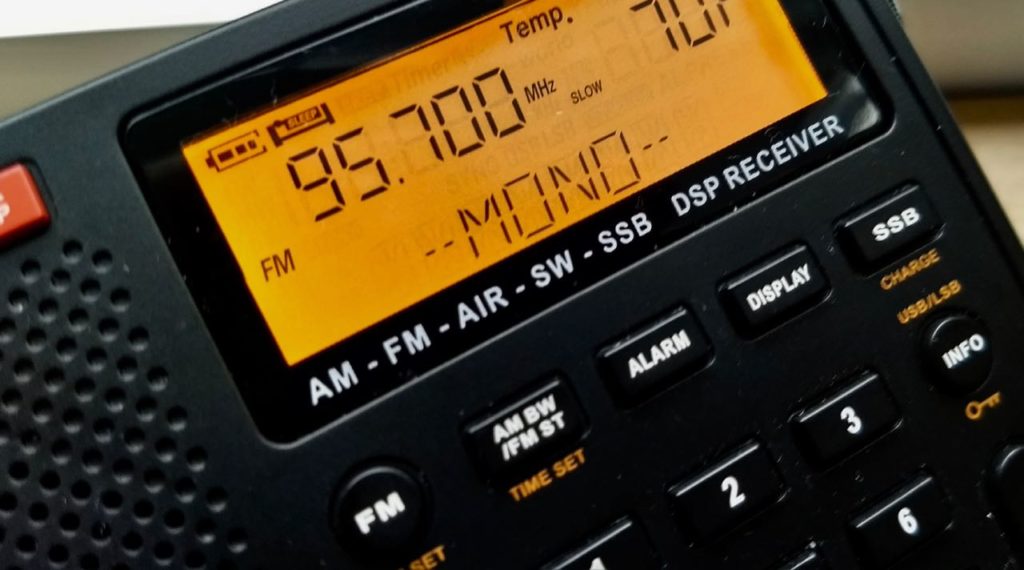
When listening to marginal FM signals, the AR1780 can be set to mono mode instead of default stereo mode.
(Source: NY Times via Mike Hansgen)
As Low-Power Local Radio Rises, Tiny Voices Become a Collective Shout
SEATTLE — A knowledge of geography is essential if you are running a tiny, 100-watt radio station. Hills are bad, for example, as are tall buildings. Salt water, though, which lies at this city’s doorstep, can boost a radio signal for miles, like a skipped rock.
For a low-power FM radio station, anything measurable in miles is good.
But on a recent Thursday night, one station, KBFG, was struggling to even get on the air. The station’s signal, audible since November in an area measurable in square blocks, had flatlined. The Ballard High School basketball team was about to take the court and the live play-by-play was in doubt.
“We’re bootstrapping it,” said Eric Muhs, a physics and astronomy teacher. Headphones were slung around his neck, and a mop of unruly gray hair came further undone as he leaned into his laptop trying to fix a software glitch. But Mr. Muhs, 60, one of KBFG’s founders, admitted that the stakes for failure were relatively low. “Almost nobody knows that we exist,” he said.
Low-power nonprofit FM stations are the still, small voices of media. They whisper out from basements and attics, and from miniscule studios and on-the-fly live broadcasts like KBFG’s. They have traditionally been rural and often run by churches; many date to the early 2000s, when the first surge of federal licenses were issued.
But in the last year, a diverse new wave of stations has arrived in urban America, cranking up in cities from Miami to the Twin Cities in Minnesota, and especially here in the Northwest, where six community stations began to broadcast in Seattle.[…]

OK, as long as low power stations, either FM or MW, adhere to clear frequencies for their area. I know for a fact that a significant number of low power stations do NOT select a clear frequency. In fact, so does the FCC since I’ve recently been in contact with the FCC. Personally, the FCC needs to be eliminated since its original focus (mitigating interference) has take a back seat to a political agenda. Hence, we have chairmen who are lawyers, not engineers…
It’s great to see Seattle’s KBFG, and low-powered community radio in general getting some press! KBFG’s callsign represents three neighborhoods in Seattle: Ballard, Freemont, and Greenwood.
I had the opportunity last year to do some volunteer graphic design & production for KBFG. I encourage any SWLing Post readers with a community radio station in their area to considering getting involved in some capacity; I know they’ll welcome your help!